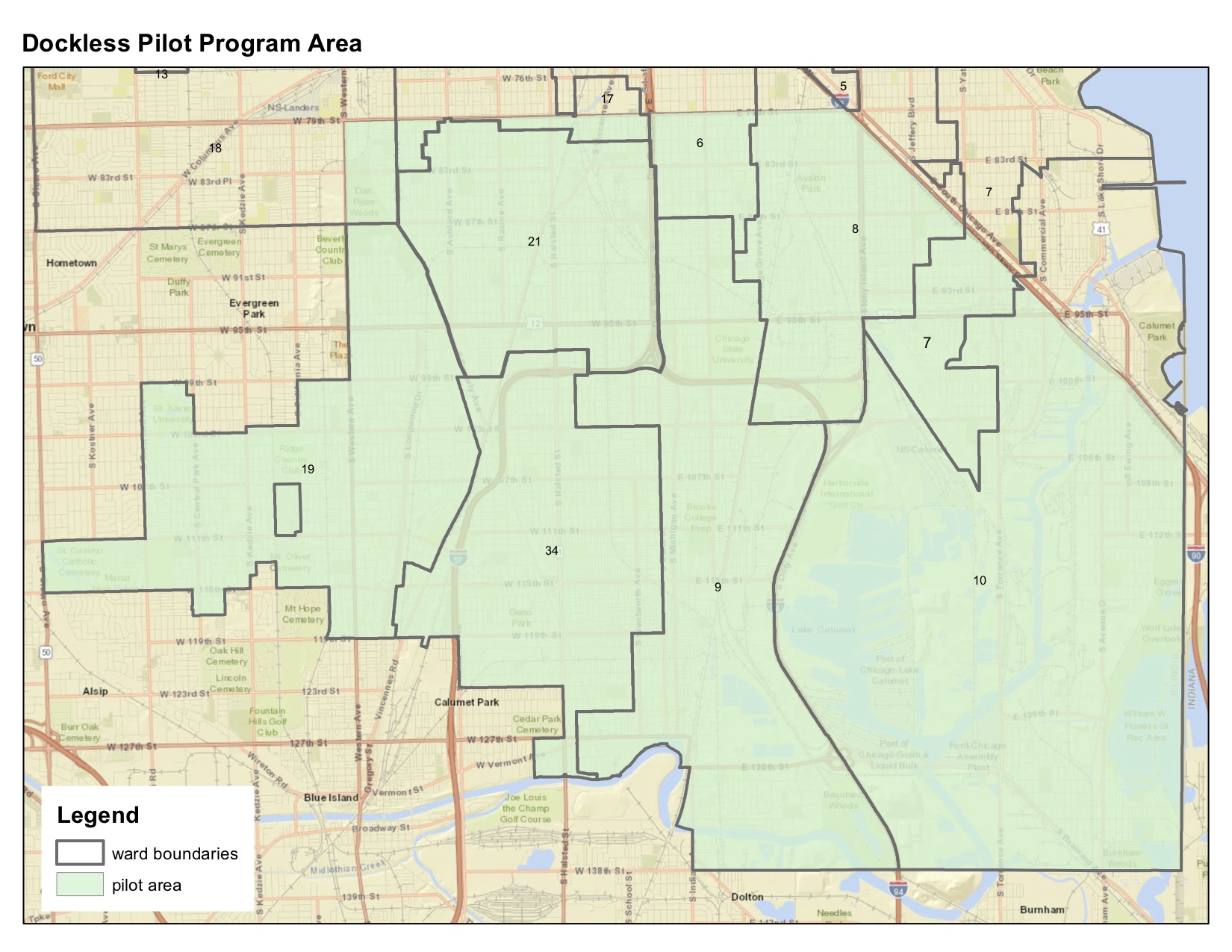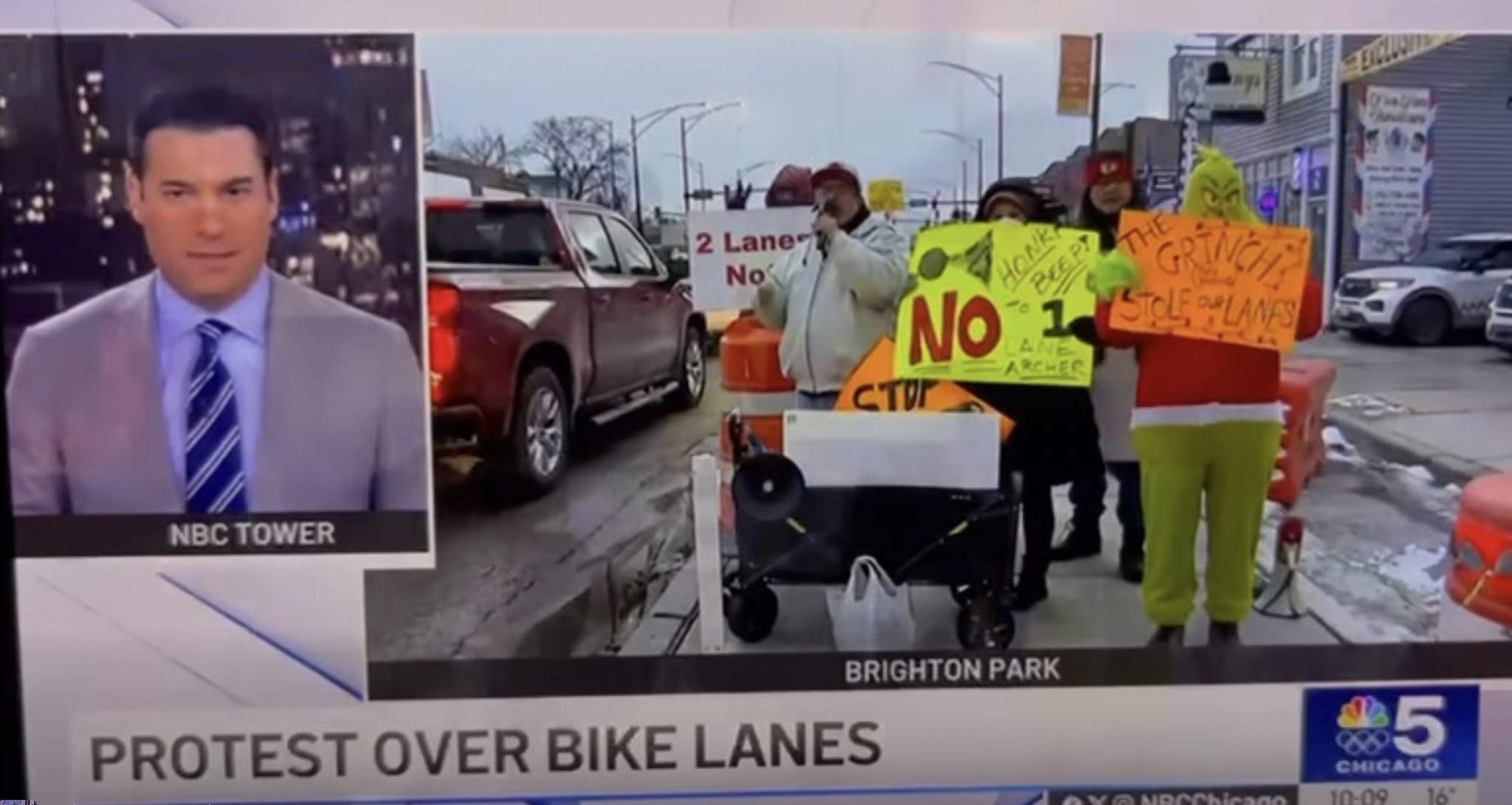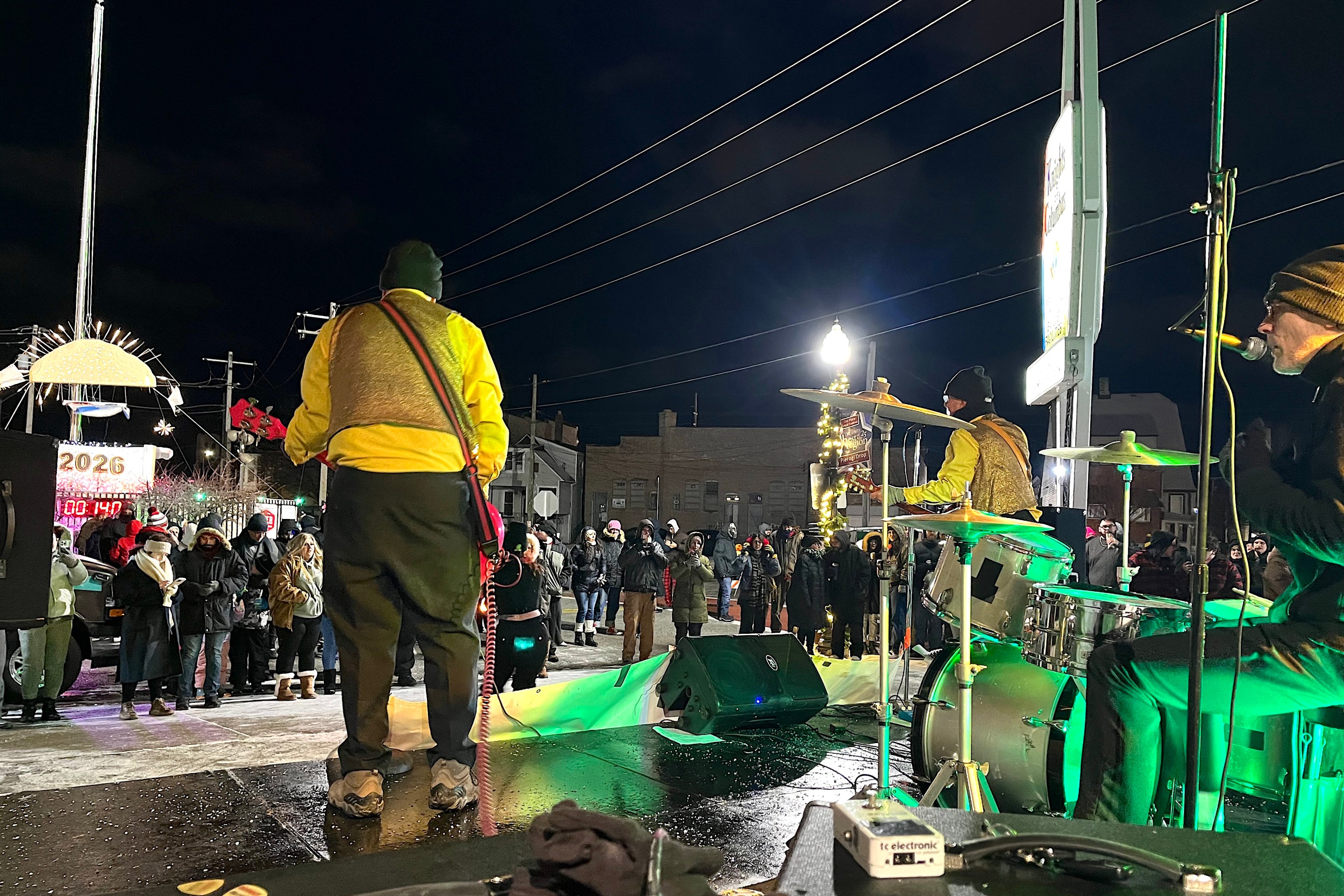Yesterday after I was alerted about the Tuesday, May 1, launch of the city's dockless bike-share pilot, Chicago Department of Transportation officials initially declined to comment on the launch. (CDOT did, however, provide a statement to a mainstream news outlet that had asked for an update on the pilot earlier in the week, around the same time Streetsblog Chicago originally requested this info.)
However, this morning the department finally provided Streetsblog with a statement that sheds some light on their decision-making process, including the controversial choice to require all vendors to only use "lock-to" bikes after July 1. (Unlike the more common "free-floating" DoBi cycles, which only have wheel locks for "free-locking" the vehicle, lock-to bikes have built-in U-locks or cables that must be used to secure the cycle to a fixed object.) CDOT also provided maps of the coverage area.
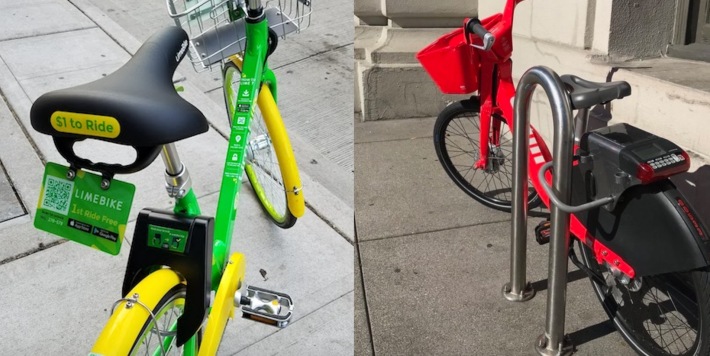
CDOT statement on the purpose of the pilot:
The success of Divvy has proven that there is great support for bike-share in Chicago. This pilot represents an opportunity for the city of Chicago to embrace emerging new technologies while promoting safe, reliable transportation choices for Chicago’s residents. The City of Chicago has heard from constituents, advocates, local elected officials, and other stakeholders about the promise that dockless bike-share technology holds to further expand transportation services to residents across the city. We are looking forward to implementing this six-month pilot program through the Department of Business Affairs and Consumer Protection’s Emerging Business Permit process as a way to learn how dockless bike-share can complement existing transportation options, including CTA bus and rail, ride-share and taxi, and the city’s existing bike-share system, Divvy. The pilot will also allow the city to observe the operations of dockless technology in order to support the further expansion of bikeshare elsewhere in the city.
CDOT statement on why the city is requiring lock-to bikes:
In our conversations with stakeholders including local residents, advocates, and in speaking with other cities that have implemented or are considering similar dockless bike-share pilot programs, right-of-way usage was raised as a serious issue to consider. The lock-to requirement, along with other requirements in the permit, establish a baseline standard that will help address right-of-way usage issues that may arise, for example, a stray bike left in the right-of-way.
Companies that mostly or exclusively use free-floating bikes, such as LimeBike and Ofo, will be allowed to participate in the pilot when it launches next week. But while vendors like Jump Mobility and Zagster, which use bikes with built-in U-locks and cable locks, respectively, will be able to launch with 250 cycles each, companies with free-floating cycles are only allowed to release 50 bikes, a mere sprinkling when you consider the large South Side coverage area. After July 1, they must remove all free-floating bikes from the streets, but they may then deploy up to 250 lock-to cycles.
Yesterday LimeBike governmental affairs director Gabriel Scheer told me he hopes Chicago may reconsider the rule requiring lock-to bikes if free-floating is successful here. "If we have two months to prove our model, then we're going to do our damnedest to do it really well," he said.
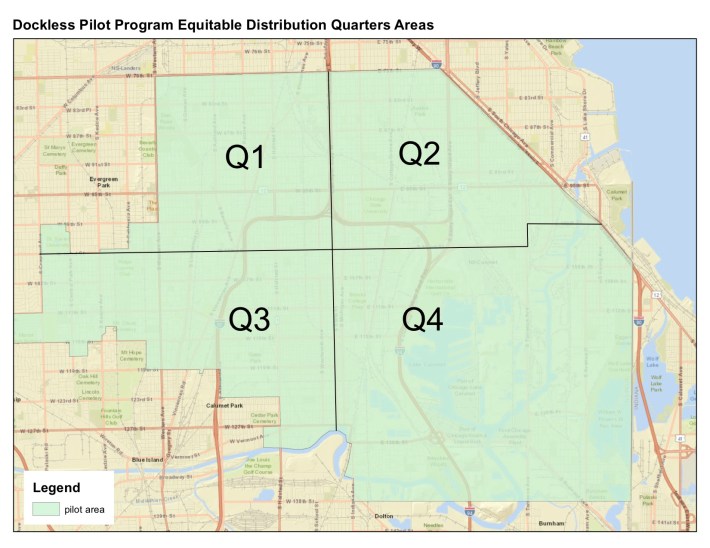
The coverage area map essentially covers all parts of the city south of 79th Street, excluding the area south of 79th and east of the Chicago Skyway, which coincides exactly with the South Chicago community area boundaries and includes parts of the 7th, 8th, and 10th wards. The DoBi coverage area lies almost entirely outside of the Divvy zone, but it does include a dozen Divvy stations near 79th between the Dan Ryan Expressway and the skyway in the Chatham and Avalon Park neighborhoods.
CDOT spokesman Mike Claffey did not immediately respond to a question about why South Chicago was excluded from the dockless pilot. One possibility is that this was done because south Chicago is the just about the only community south of 79th that is close to the southern trailhead for the Lakefront Trail, and the city wanted to discourage DoBi users from riding far outside the pilot area on the path. (DoBi customers will be able to ride the bikes outside of the coverage zone and end their trips there, but but they won't be able to unlock bikes there due to geofencing.)
If that's the case, it seems like discouraging dockless customers from riding on the most popular trail in Chicago is counterproductive to encouraging DoBi use. On the other hand, the Major Taylor Trail on the Southwest Side and the Burnham Greenway on the Southeast Side each offer a few miles of car-free riding within the coverage zone.
Read the full details about the city's rules for the dockless launch here.
Update 4/27/18, 1 PM: CDOT spokesman Mike Claffey provided this explanation for why the DoBi coverage area doesn't go east of the Chicago Skyway: "The Skyway was an easily identifiable, well-defined geographic boundary for the dockless pilot. It was not done to discourage folks from taking bikes on the Lakefront Trail." Of course, 79th Street is also an obvious geographic boundary, so this doesn't explain why the city chose to make the borders of the service area less intuitive and cut off hundreds or thousands of residents from the bikes by omitting South Chicago from the map.
